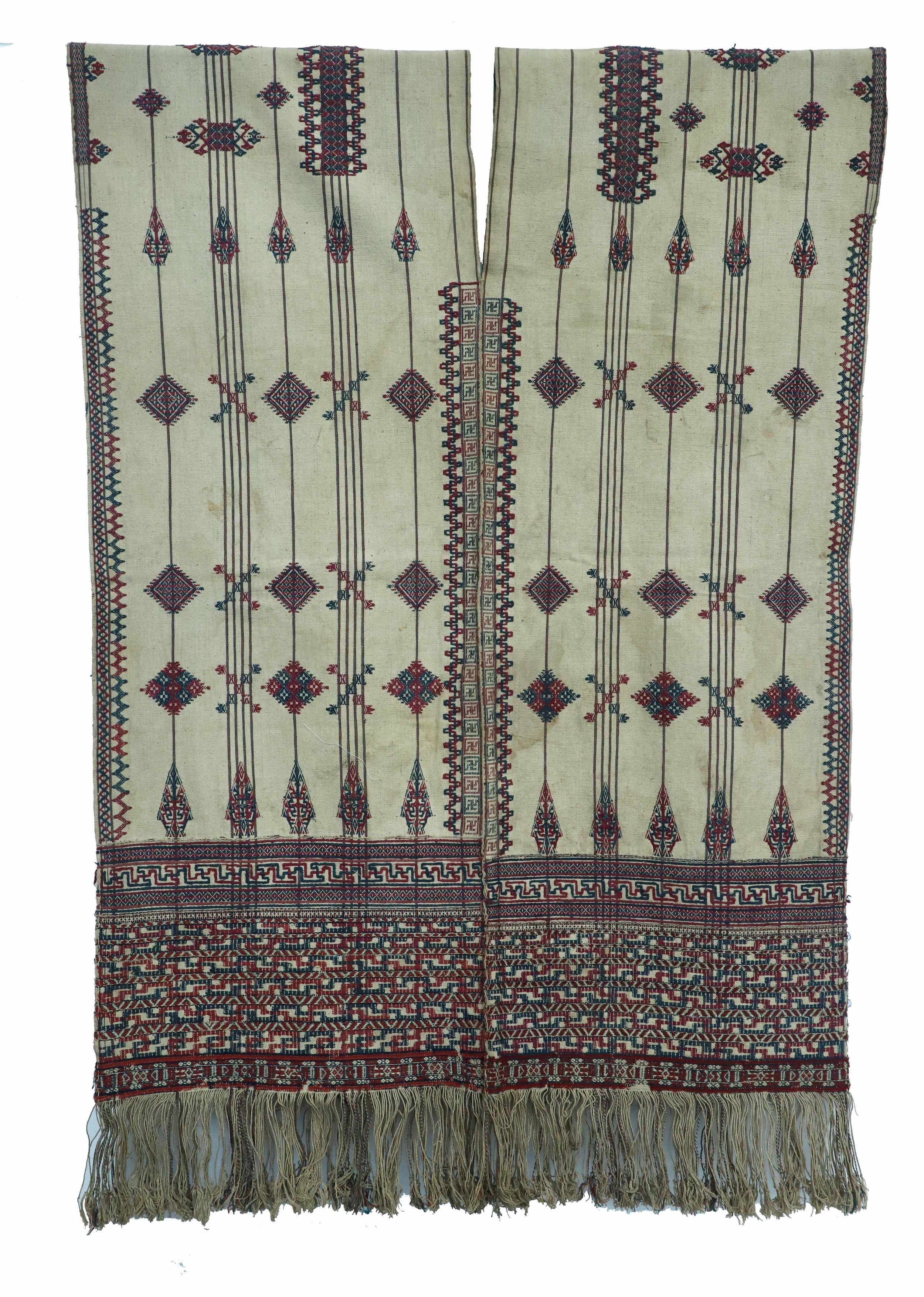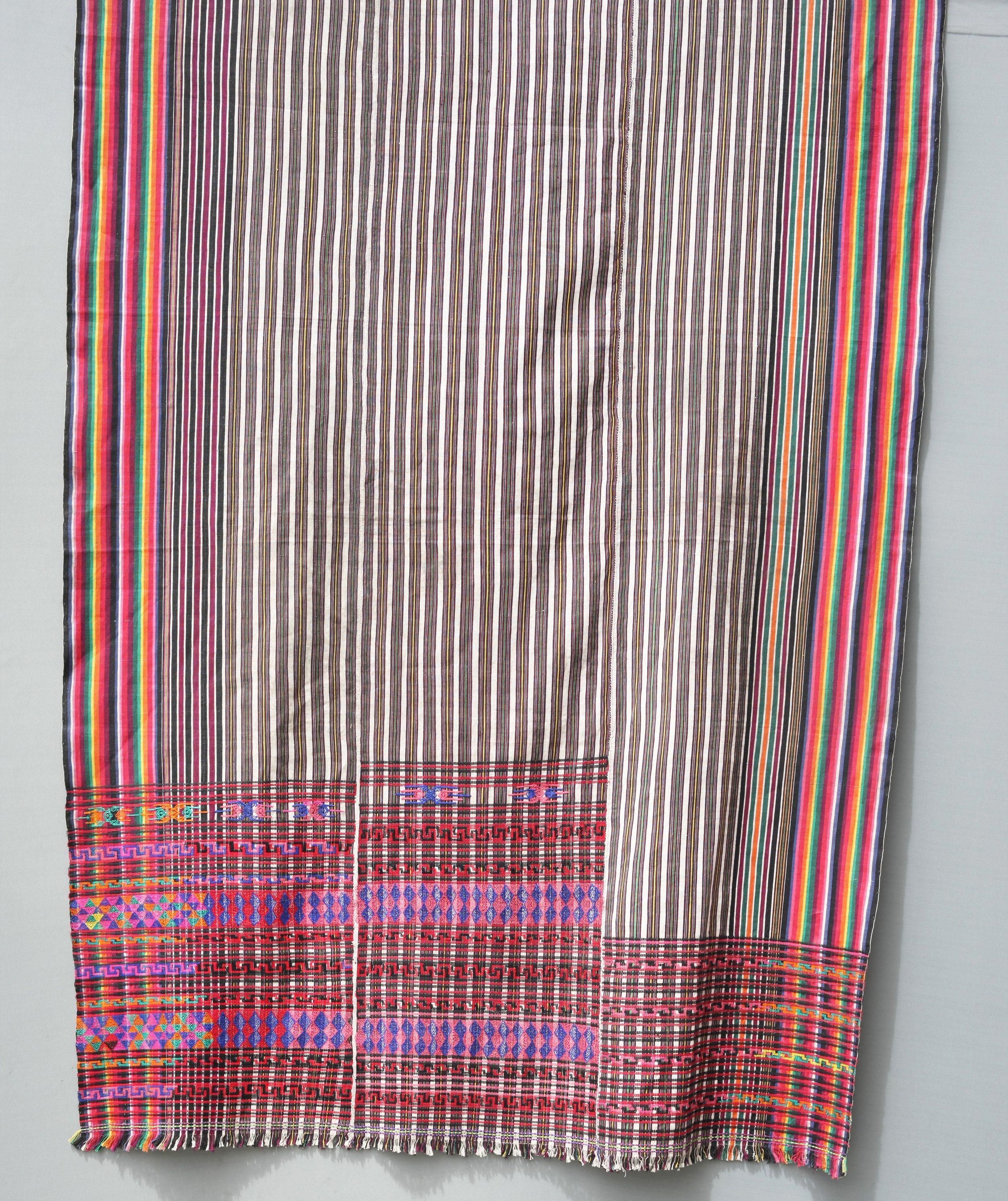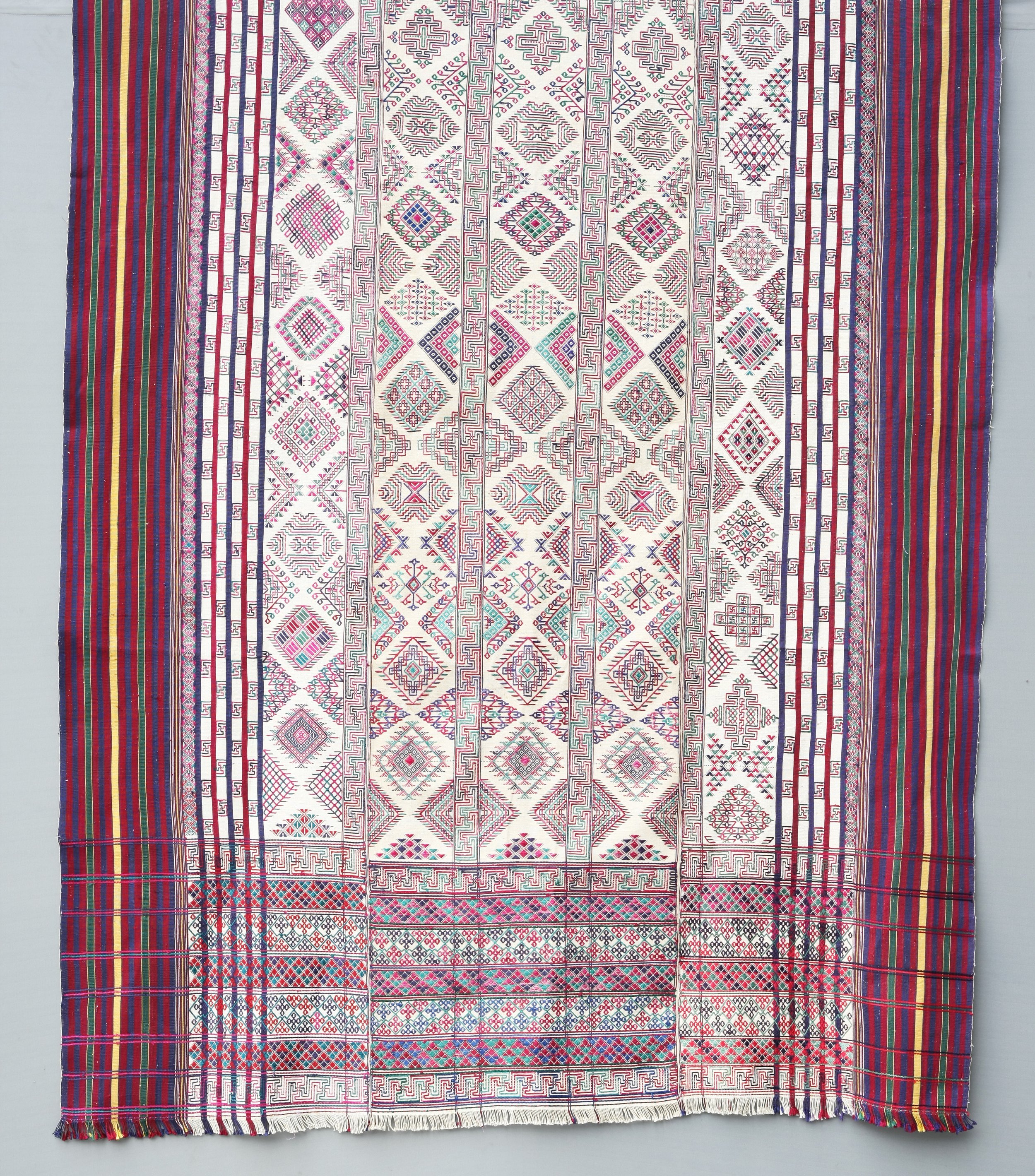Kushuthara: The most intricate textile of Bhutan
Located in Lhuentse, northeastern Bhutan, the Kurtoe village is the ancestral home of the Wangchuck Dynasty, known for producing the most intricate and exquisite kushuthara, a woman's dress worn mostly during festivals and celebrations. It is traditionally woven on a white background decorated with intricate discontinuous supplementary weft patterns called trima, a technique where extra weft yarns are coiled around the warp to create motifs raised above the surface and often mistaken for embroidery. The most intricate kushuthara could take a year to weave and cost up to USD 2600.
In the past, people from north-central and eastern Bhutan wore tunics with supplementary weft patterns known as kushung, which are now worn only for rituals. Between the 17th-19th Century, when kira became popular, weavers in Kurtoe began embellishing the thara kira (warp striped weaves on white ground) with supplementary weft patterns.
Kushung. Photo from Textile Museum and the Royal Textile Academy of Bhutan
Thara Kira. Photo from Textile Museum and the Royal Textile Academy of Bhutan
Over the years, kushuthara has evolved into many style variations, with bolder and more complex patterning and different background colors. With the availability of only natural dyes, the warp ground colors were limited to blue (ngosham), red (mapsham), black (napsham), and green (jangsham). Today, kushutharas are woven in a wide range of colors with synthetic dyes and imported yarns from India and China. These contemporary designs are collectively known as pesar, meaning new design.
Kushutharas Kira. Photo from Textile Museum and the Royal Textile Academy of Bhutan
Her Majesty Queen Mother Sangay Choden Wangchuck
Women of the royal family have long advocated weaving as an art and a source of livelihood. The Queens and noblewomen employed many highly skilled weavers as part of the palace staff to weave elaborate kushutharas. According to oral traditions and folksong sang by women in central Bhutan, the Chinese Princess Wencheng, popularly known as Ashi Jyazum in Bhutan, introduced the backstrap loom to Bhutan during the 7th Century. Meanwhile, Ashi Wangmo, the sister of the second King of Bhutan, is credited to have introduced the horizontal frame loom from Tibet in the 1930s.
Her Majesty the Queen Mother, Sangay Choden Wangchuck, has played a vital role in preserving and promoting the art of weaving by establishing and extending royal patronage to the Textile Museum and the Royal Textile Academy of Bhutan. Her Majesty's interest and timely intervention has assisted the Bhutanese textile tradition to gain national and international recognition.
Weaver Ms. Yangzom
Ms. Yangzom, a skilled weaver from Khoma village in Lhuentse, has been actively weaving for the last 36 years and continues to weave intricate kushutharas. Most girls in her village did not go through formal education. Instead, they stayed at home learning how to weave from their mothers. Ms. Yangzom was 9 years old when she first learned how to weave from her mother who also learned from her mother. The first piece she wove was a panel for a phechung (square bag typically embellished with supplementary weft designs) with minimal patterns which was sold for USD 1 to a foreigner. She was able to weave a kushuthara from the age of 11.
Ms. Yangzom on a backstrap loom
Ms. Yangzom with the author in Khoma, 2017
A common scene in Khoma consists of the thudding sound as the wooden sword beats the warp, with women sitting in groups in makeshift houses, weaving on their backstrap loom. Even today, with almost all girls being educated, the art of weaving is an important cultural legacy that is being passed down from generation to generation.
"I taught my daughter how to weave when she was 6 years old. She is now 24 years old, a high school graduate, and still weaves for livelihood. I am happy to have a granddaughter who is still an infant but will definitely carry on this weaving tradition." - Ms. Yangzom.
Ms. Yangzom resonates with the challenge shared by weavers in her country - to compete with the machine-made textiles with Bhutanese patterns from India that are inexpensive and easily available in the market. Marketing and selling their well-labored products have become a more significant challenge during the COVID pandemic.
Ms. Yangzom weaves at least two kushutharas with very intricate patterns in a year. She is one of the winners of the National Design and Art Competition, an annual event organized by the Textile Museum and the Royal Textile Academy of Bhutan, funded by the Royal Government of Bhutan and Mr. and Mrs. Alan Bickell from the USA. Since winning the competition, her designs have been in demand for commissions. As a result, weavers in the community who have woven similar pieces are also benefitted. Their textile arts have been sold to Bhutanese residing in Bhutan and worldwide.
Follow Ms. Yangzom’s Instagram to view her work.
Ms. Yangzom with her winning piece, NDAC 2020








